10 Of The Easiest Vegetables To Grow From Seed For Beginners
If you’re brand new to seed starting, it can be a little tricky. It’s certainly a task that takes practice, patience and a few years before mastering the skill. However, there’s several vegetables that I’ve deemed as easy-to-grow from seed. This includes veggies that do best from being started indoors. As well as those that thrive from being sow’d directly in the soil. And so here’s my list of 10 of the easiest vegetables to grow from seed for beginners!
This post covers:
- The 10 easiest vegetables to grow from seed
- Detailed growing info on each veggie
- Links to my favourite varieties of each vegetables for you to try
Simplify your vegetable seed starting with this digital guide!
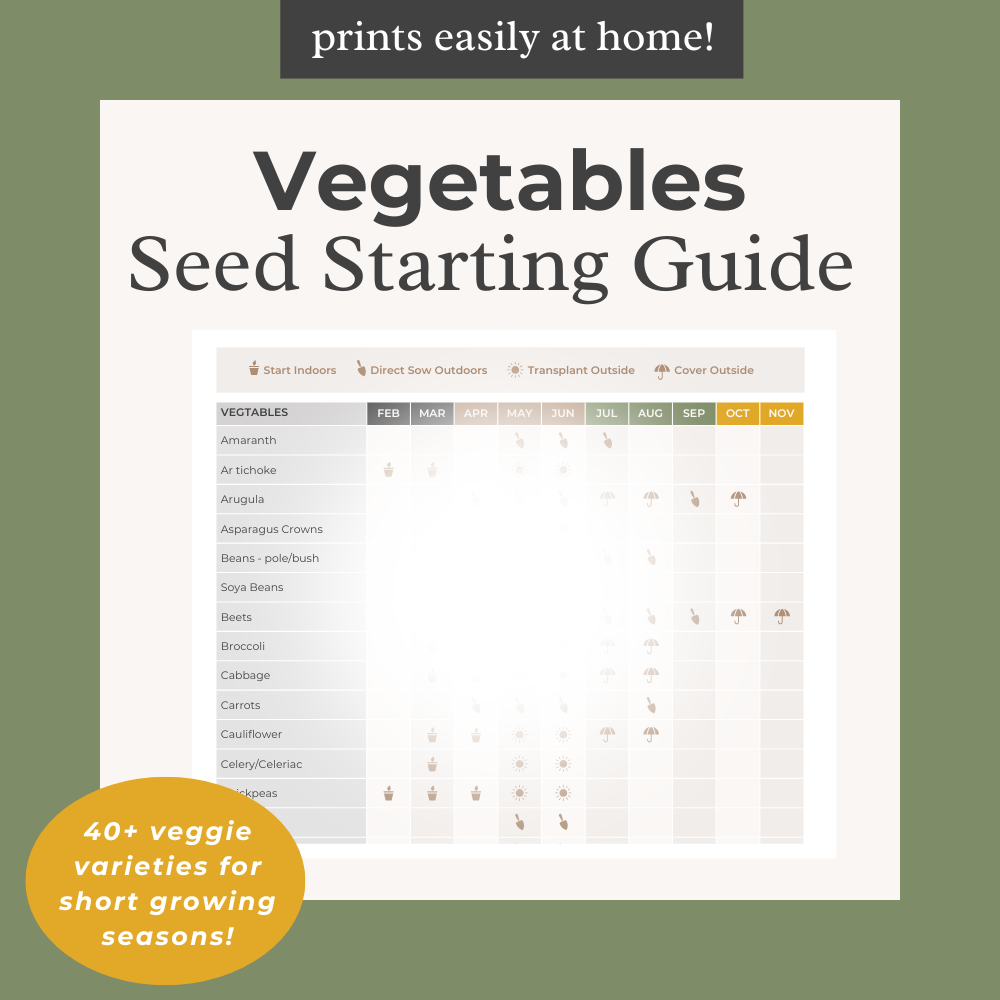
Consider this digital guide your gardening work back schedule for growing a veggie garden from seed.
**This download has information best suited for gardeners in Zone 2, 3 & 4.
In this PDF, you’ll find easy to follow planting advice you can use to build out your vegetable garden planting schedule, including:
Additional growing tips — ie: covering, succession planting, etc..
40+ vegetables that can be started across 12 months
Easy-to-follow visual legend with symbols
Timing for starting each plant
Suggested growing style — ie: direct sow vs. start indoors
10 Of The Easiest Vegetables To Grow From Seed For Beginners
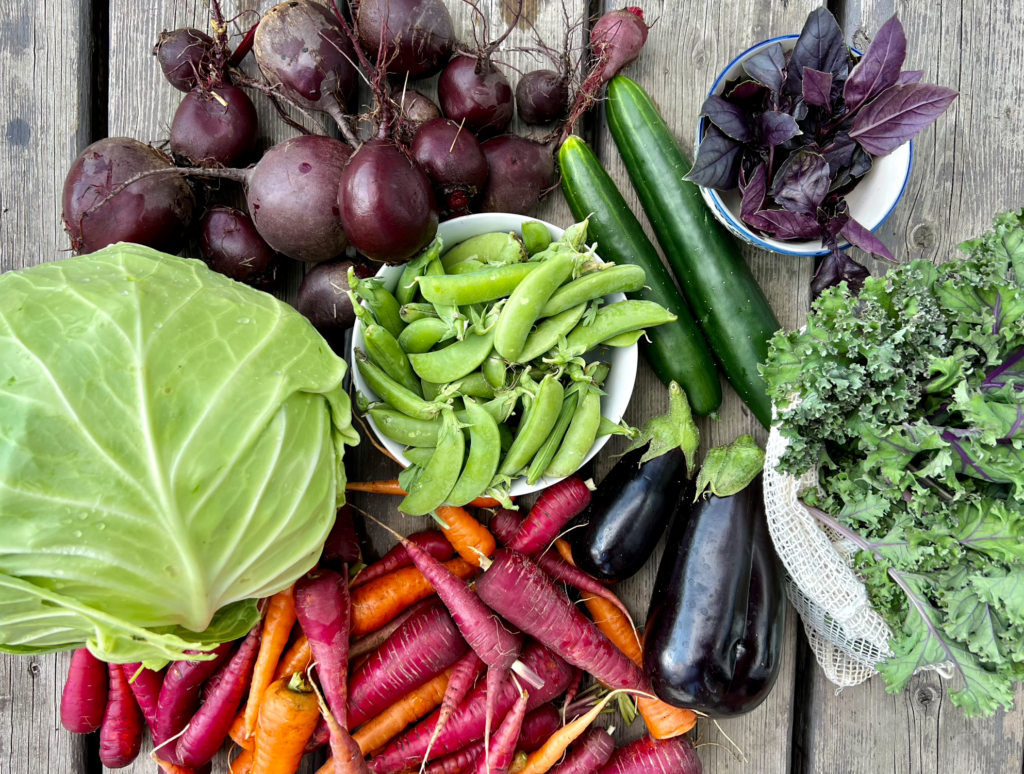
Keep reading for more growing info & suggested varieties on each veggie!
1. Tomatoes
2. Bell Peppers
3. Cucumbers
4. Squash
5. Peas
6. Beets
7. Beans
8. Corn
9. Salad Greens
10. Radishes & Turnips
*Note: This list includes veggies that grow best from being started indoors as well as veggies that prefer to be directly sow’d. Be sure to follow suggested growing advice for best results.
1. Tomatoes

Tomatoes kick-off our list as they are probably one of the easiest vegetables to start from seed!
Now, they need to be started indoors if you’re growing in a cold climate, short growing season. Like I have here in my Manitoba Zone 3 garden.
But even with starting tomato seeds indoors, I still consider tomatoes very easy to grow from seed.
Plus, there’s an endless selection of incredible tomato varieties to choose from.
You can find a few of my favs here in this post My Fav Tomato Varieties For Zone 3 (2023 Edition). But I’ve linked a few more below too. So keep reading!
How To Grow Tomatoes From Seed
Difficulty Level: Fairly easy depending on variety.
Sun: Requires full sun, minimum of 8 hours of direct sunlight per day.
Planting: Start tomatoes indoors 6-8 weeks before your last frost date. Reference the days to maturity on your seed packet for exact timing for more speciality varieties.
Growing: Sow 1-2 tomato seeds per cell. Plant 1″ deep into moist soil. Cover with humidity dome and place under grow lights. Mist with water to keep soil moist until germination occurs. Once 80% of tray is germinated, remove the dome. Keep happy inside under grow lights with regular watering & fertilizing. Transplant outside in the garden after your last frost date. Tomatoes require consistent watering and regular organic fertilizing to develop beautiful fruit.
Suggested Varieties:
- Manitoba Tomato — classic slicing bush variety, great for short growing seasons!
- Sweet Million Cherry Tomato — prolific and true to its name!
- Aunt Molly’s Ground Cherry — something fun, unusual and wildly delicious, more of a dessert tomato!
2. Bell Peppers
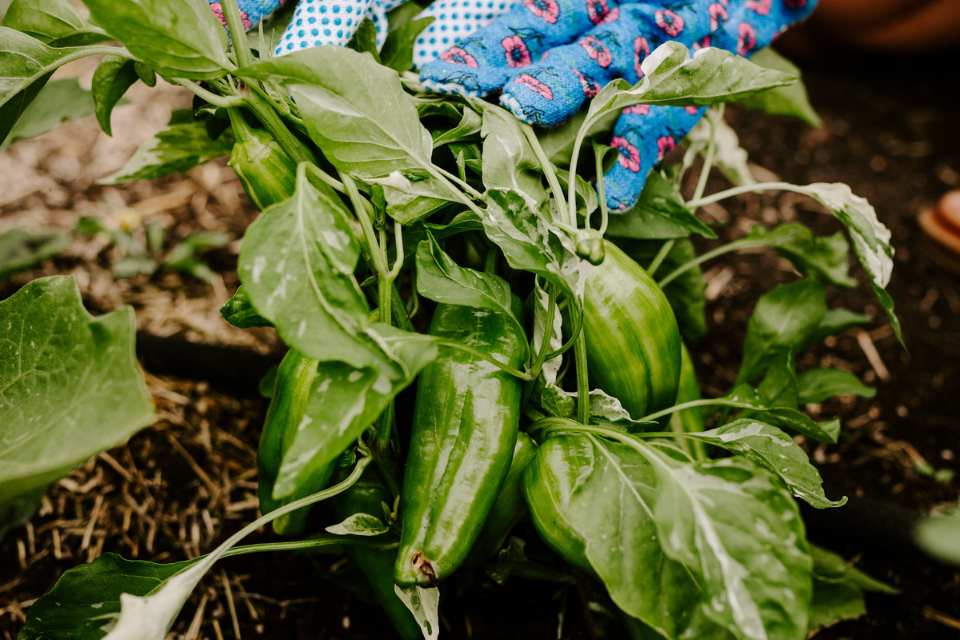
It may surprise you to find bell peppers on this list.
Because a lot of backyard gardeners will tell you they’ve struggled to grow peppers well. Especially those in a short growing season.
But the truth is, and in my experience, bell peppers are easy to grow from seed.
Plus you’ll get better yields growing them on your own rather than buying starts from a nursery.
This is because bell peppers from nurseries are typically started in hot, humid greenhouse conditions. And when you bring them home to your garden, they get shocked and stunted.
So give it a shot! Grow bell peppers from seed this season.
How To Grow Bell Peppers From Seed
Difficulty Level: Moderate
Sun: Requires full sun, minimum of 8 hours of direct sunlight per day.
Planting: Start bell peppers indoors 8-10 weeks before your last frost date. Reference the days to maturity on your seed packet for exact timing for more speciality varieties.
Growing: Follow my complete guide How To Grow Great Hot Peppers In A Short Growing Season here for exact growing details. I’ve included my hacks for getting great yields here in Zone 3.
Suggested Varieties:
- California Wonder — one of my go-tos, really easy to grow and good yields
- Hungarian Cheese Sweet Pepper Blend — mini bell peppers!
- Oranos — orange, conical sweet peppers with great yields
3. Cucumbers
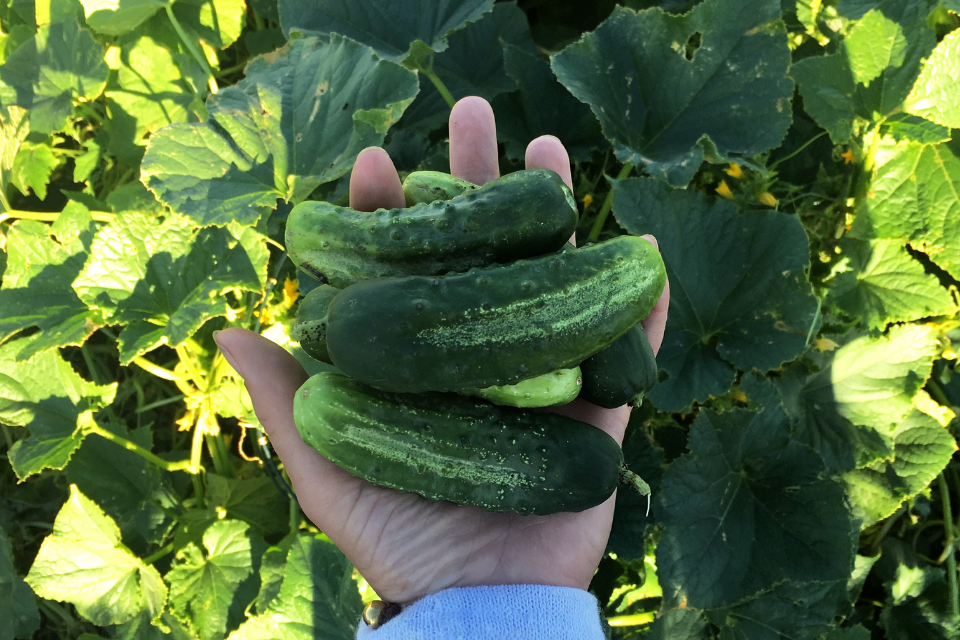
Cucumbers are wildly easy to grow from seed!
Like so easy.
In fact, I would encourage you to never buy started cucumber plants from a nursery again. And always start them yourself instead!
They grow quickly indoors and can be planted out within just a few weeks.
I love growing cukes from seed each year and am always hunting down new varieties (a few of my favs linked below!).
How To Grow Cucumbers From Seed
Difficulty Level: Really easy
Sun: Requires full sun, minimum of 8 hours of direct sunlight per day.
Planting: Start cucumbers indoors 4 weeks before your last frost date. You can also direct sow outdoors in the garden after your last frost. However you will have a later harvest.
Growing: Sow 1 cucumber seed per cell. Plant 1.5-2″ deep into moist soil. Cover with humidity dome and place under grow lights. Mist with water to keep soil moist until germination occurs. Once 80% of tray is germinated, remove the dome. Keep happy inside under grow lights with regular watering & fertilizing. Transplant outside in the garden after your first frost date.
Suggested Varieties:
- Marketmore — really great yields, awesome for market gardeners and/or picklers who want tons of cukes
- Cucamelon — like mini dinosaur eggs, these Mexican sour gherkins are SO cute!
- Vista — my fav greenhouse variety
4. Squash
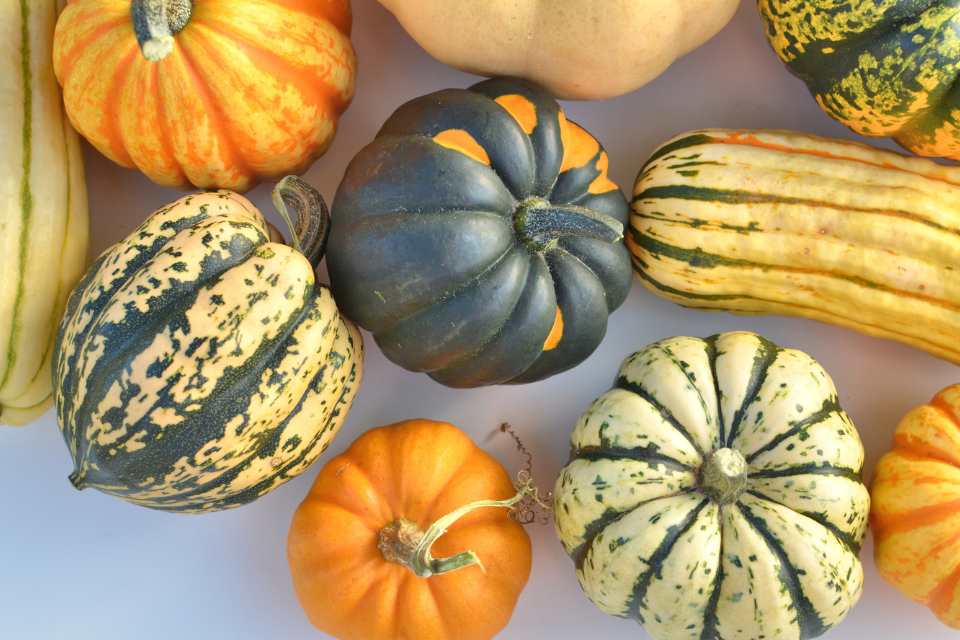
Whether you’re looking to grow Winter squash (such as butternut or spaghetti) or a Summer squash (such as zucchini) both are wildly easy to grow.
You may have heard of gardeners talking about volunteer squash just “popping up” in their compost pile. And it’s true!
Squash thrive in nutrient-rich soils. They germinate easily. And grow quickly.
So if you’re a beginner gardener definitely try growing squash from seed!
How To Grow Squash From Seed
Difficulty Level: Easy
Sun: Requires full sun, minimum of 8 hours of direct sunlight per day.
Planting: Start squash seeds indoors 4 weeks before your last frost date. You can also direct sow outdoors in the garden after your last frost. However you will have a later harvest. I suggest only direct sowing Summer squash. Start your Winter squash indoors as they usually require 100+ days to maturity.
Growing: Sow 1 squash seed per cell. Plant 2-2.5″ deep into moist soil. Cover with humidity dome and place under grow lights. Mist with water to keep soil moist until germination occurs. Once 80% of tray is germinated, remove the dome. Keep happy inside under grow lights with regular watering & fertilizing. Transplant outside in the garden after your first frost date.
Suggested Varieties:
- Desert Zucchini — my go-to zucchini variety, produces really uniform fruits
- Mashed Potatoes Acorn Squash — so, so delicious and stores well over Winter
- Honey Boat Delicata Squash — really productive, tasty and good for storage
5. Peas
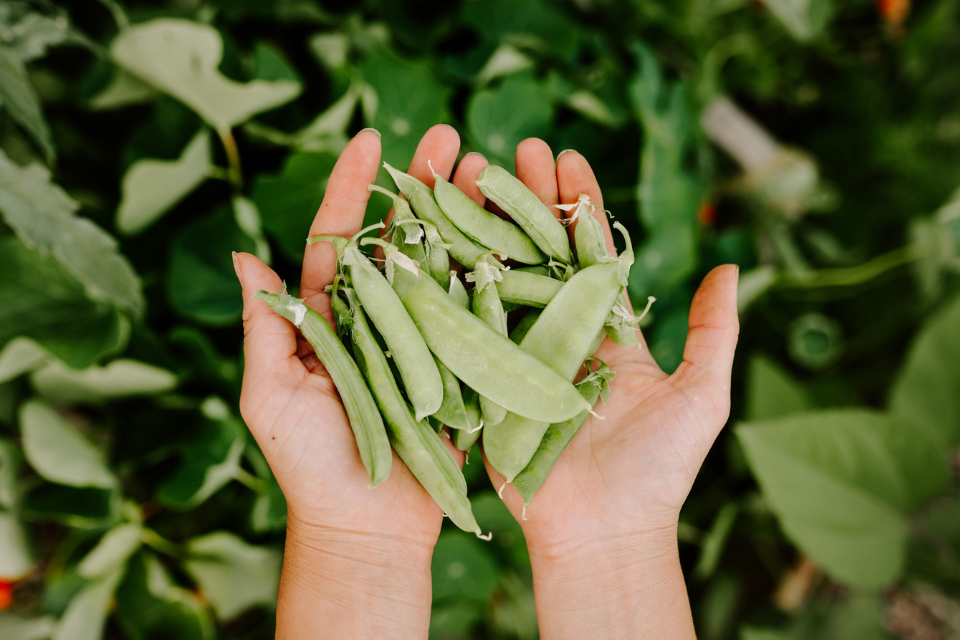
Shelling peas, snap peas and snow peas are all so easy to grow from seed.
They can and should be directly sow’d in your garden for best results.
No need to start indoors! So extra easy in that regard.
Plus, I find my peas do best when I plant them before my last frost date when then soil is still a little cold.
How To Grow Peas From Seed
Difficulty Level: Really easy
Sun: Requires partial sun, minimum of 6 hours of direct sunlight per day.
Planting: Direct sow pea seeds 1.5-2″ deep into cool, moist soil. Can be planted before your last frost date but be sure to keep well watered if frost is in the forecast.
Growing: Peas grow easily with moist soil and germinate best in cool Spring temperatures. Water regularly until germination occurs. Provide a support or trellis so peas can easily vine upwards. You will have better yields if plants have a support system.
Suggested Varieties:
- Super Sugar Snap — as the name suggests, so sweet & tasty
- Alaska Shelling Pea — great for Northern climates and early to produce fruit
- Avalanche Snow Pea — prolific and produces amazing, tall vines!
6. Beets
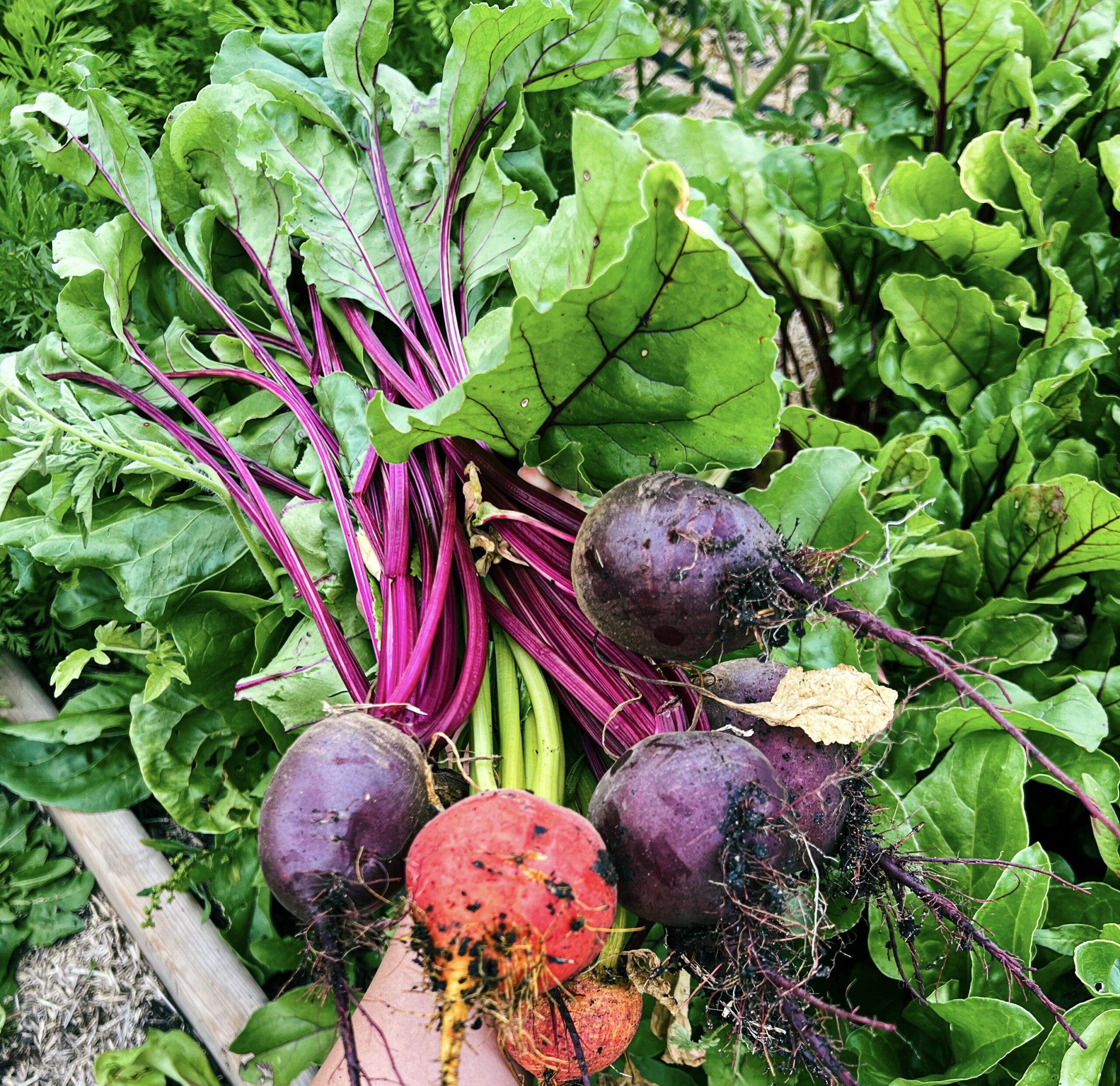
Beets are easy to grow from seed if you do two key things:
First, water your beets consistently during germination. Soil must stay moist in order for seeds to germinate nicely.
Second, thin your beets once they have put on their second set of leaves. Gardeners typically sow beet seeds too close together (myself included). And beets need 2-3″ between them to develop uniform roots.
Follow those two tips and you’ll have a gorgeous beet harvest!
How To Grow Beets From Seed
Difficulty Level: Moderate
Sun: Requires partial sun, minimum of 6 hours of direct sunlight per day.
Planting: Direct sow beet seeds 1.5-2″ deep into cool, moist soil. Can be planted before your last frost date but be sure to keep well watered. Try to space seeds 2-3″ apart.
Growing: Once second set of leaves has emerged, thin beets so they are 2-3″ apart. Water consistently and watch for pest pressure if temperatures get too hot.
Suggested Varieties:
- Touchstone Gold — classic golden, yellow beet variety
- Chioggia — striking Italian beet with pink and white stripes, a real show stopper
- Tanus — cylindrical red beets that can be harvested as ‘baby fingerlings’ after just 45 days
7. Beans
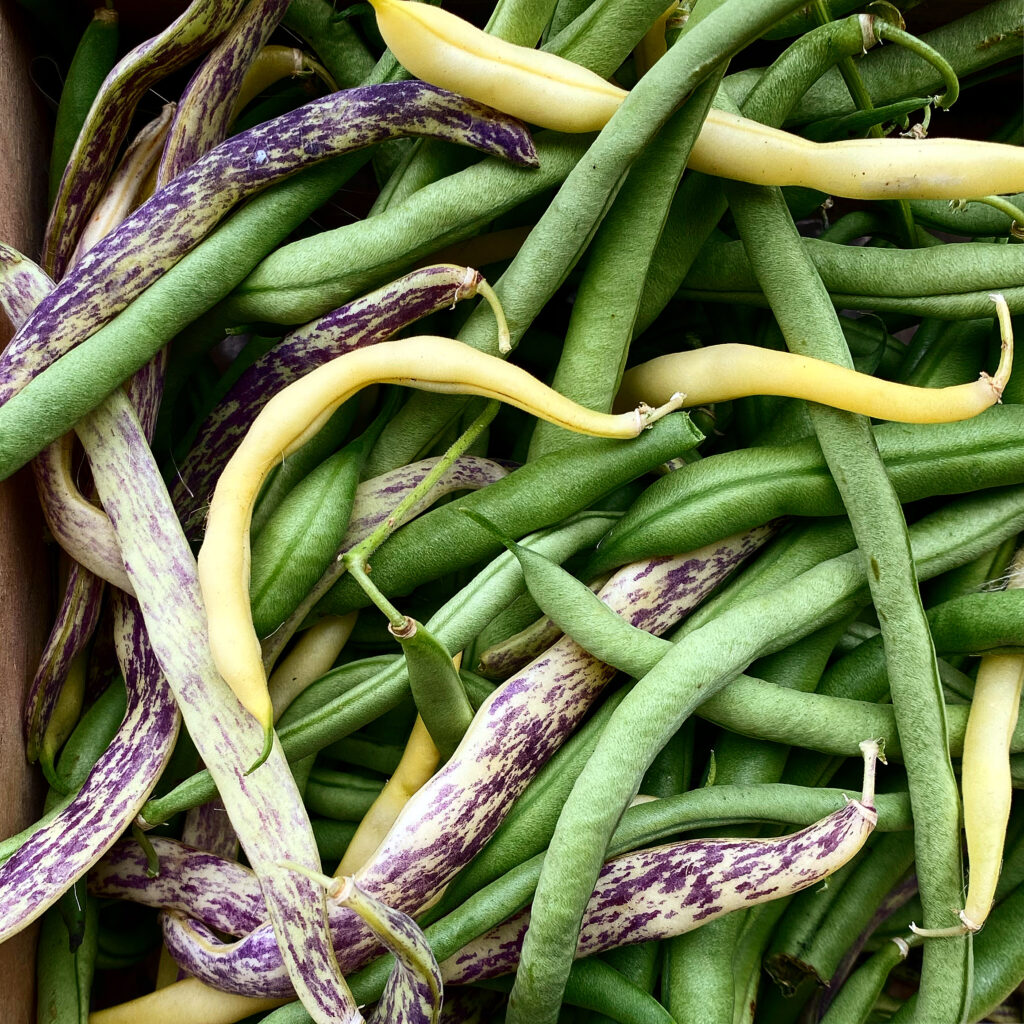
Bush beans, pole beans, you name it. They are all easy to grow from seed for beginners!
Direct sow your beans after your last frost date and sit back.
There’s really not much to it!
Beans are one veggie I have found grow well in a range of soil types.
Sunshine, water and a little weeding and you’ll have a great bean harvest.
How To Grow Beans From Seed
Difficulty Level: Really easy
Sun: Requires full sun, minimum of 8 hours of direct sunlight per day.
Planting: Direct sow bean seeds 2-3″ deep in warm soil after your last frost date. Careful to provide adequate spacing between plants for proper air flow and to avoid disease. Keep soil moist during germination.
Growing: Water beans continuously, keeping soil damp. Be careful not to over fertilize as it can affect flowering. Instead, fertilize with an organic kelp-based fertilizer like Sea Magic. If growing pole beans, provide proper support so plants can climb upwards. Archways are great!
Suggested Varieties:
- Jacob’s Cattle Bean — nice for drying and storing over Winter, really pretty beans speckled red and white
- Scarlett Emperor — stunning for vining archways and trellises
- Kuroshinju Edamame — fun and unusual, plus grows well even in a cold climate
8. Corn
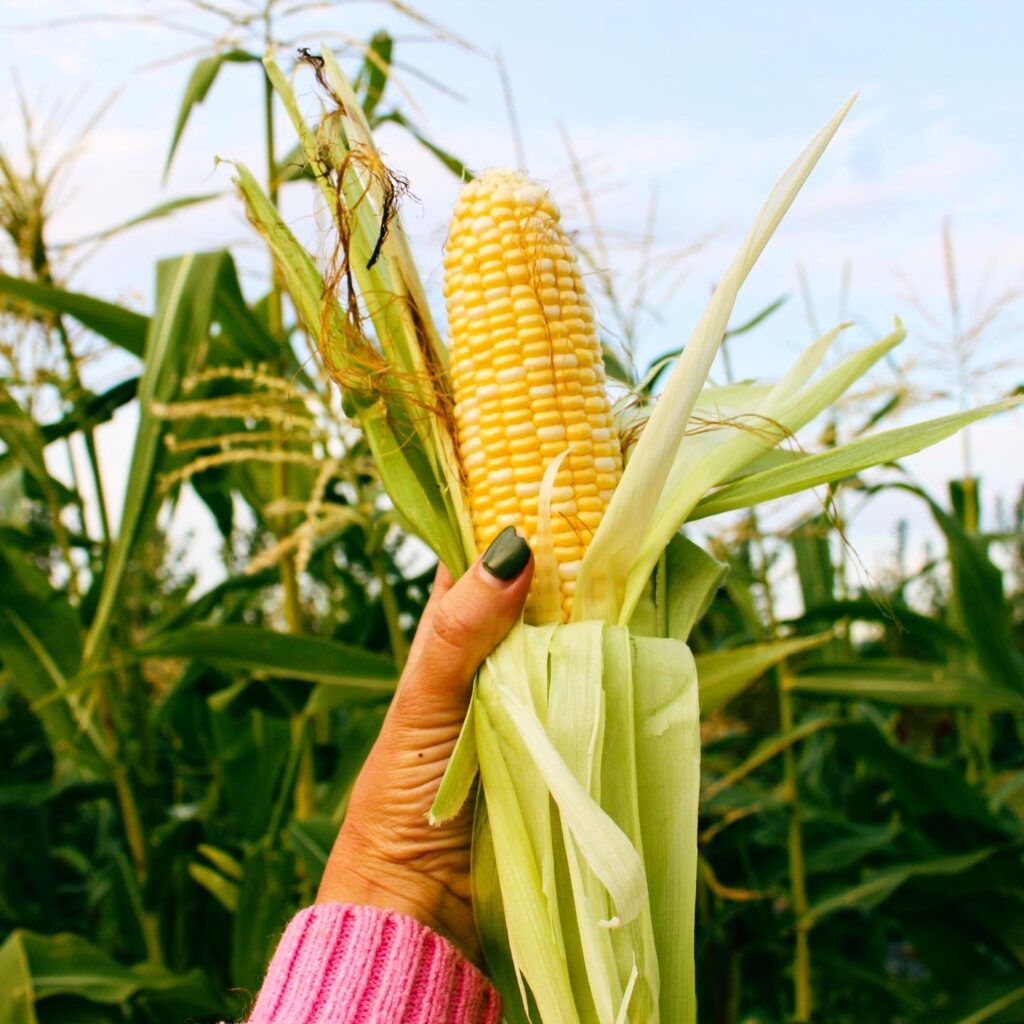
While corn is easy to germinate and grow from seed, some gardeners find it hard to get good yields off their corn crop.
But you can get a great corn harvest if you follow these tips:
- Choose a variety that is bred for productivity and disease-resistance
- Wait until your soil is warm to sow seeds, especially if planting organic seeds
- Fertilize your corn regularly! Corn is a heavy-feeder and benefits from an all-purpose organic fertilizer
How To Grow Corn From Seed
Difficulty Level: Moderate
Sun: Requires full sun, minimum of 8 hours of direct sunlight per day.
Planting: Direct sow corn seeds 3″ deep in warm soil after your last frost date. Be sure to plant in rows as it’s key for pollination. Space rows at least 3″ apart. Keep soil moist during germination.
Growing: Fertilize your corn crop 2-3x during the growing season with an all-purpose organic fertilizer as well as by amending the soil with compost. Weed regularly so corn is not competing for nutrients.
Suggested Varieties:
- Peaches and Cream — sweet corn that is easy to grow
- Caramel Crisp Popping Corn — for homemade popcorn, so fun!
- Glass Gem — gorgeous multicolored heads of corn, perfect for drying to use for Fall decor
9. Salad Greens
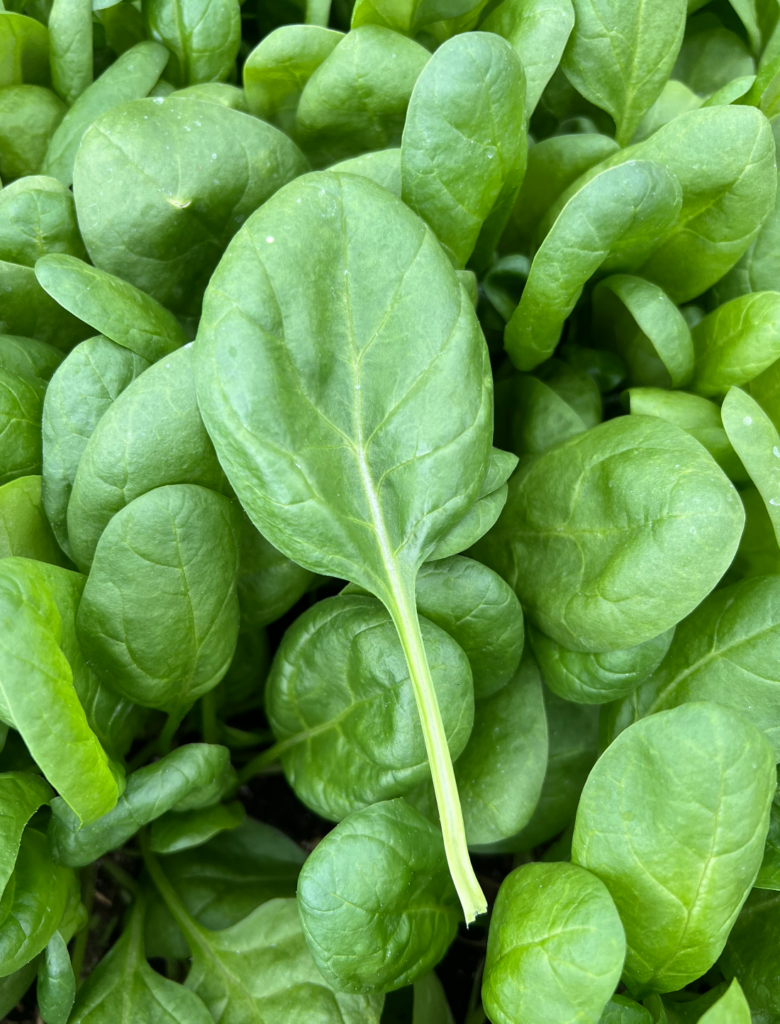
I’ll say it here and I’ll say it again…
All varieties of salad greens are easy to grow and beginner friendly!
Whether you love butter lettuce, romaine, arugula, spinach, mustard greens or Asian-style greens — you really can’t go wrong! And will have success.
How To Grow Salad Greens From Seed
Difficulty Level: Really easy
Sun: Requires partial shade, minimum of 4 hours of direct sunlight per day.
Planting: Direct sow your salad green seeds in early Spring before your last frost date when soil is cool. You can sow again in the Fall for a late season harvest. For baby greens or mixed salad greens, they can be sow’d heavily for a full-looking bed of greens. You can also start trays of greens indoors under grow lights during Winter months. For head lettuce, space seeds 1-2″ apart.
Growing: Consistently water soil during germination. For baby greens, harvest after 28-35 days. Or continue growing to full maturity for heads of lettuce.
Suggested Varieties:
- Rouge d’Hiver — gorgeous purple lettuce that does great in cool weather
- Winter Spinach — one of my fav varieties of all time, produces juicy spinach leaves
- Little Gem — mini heads of romaine, ready within 45-55 days
10. Radishes & Turnips
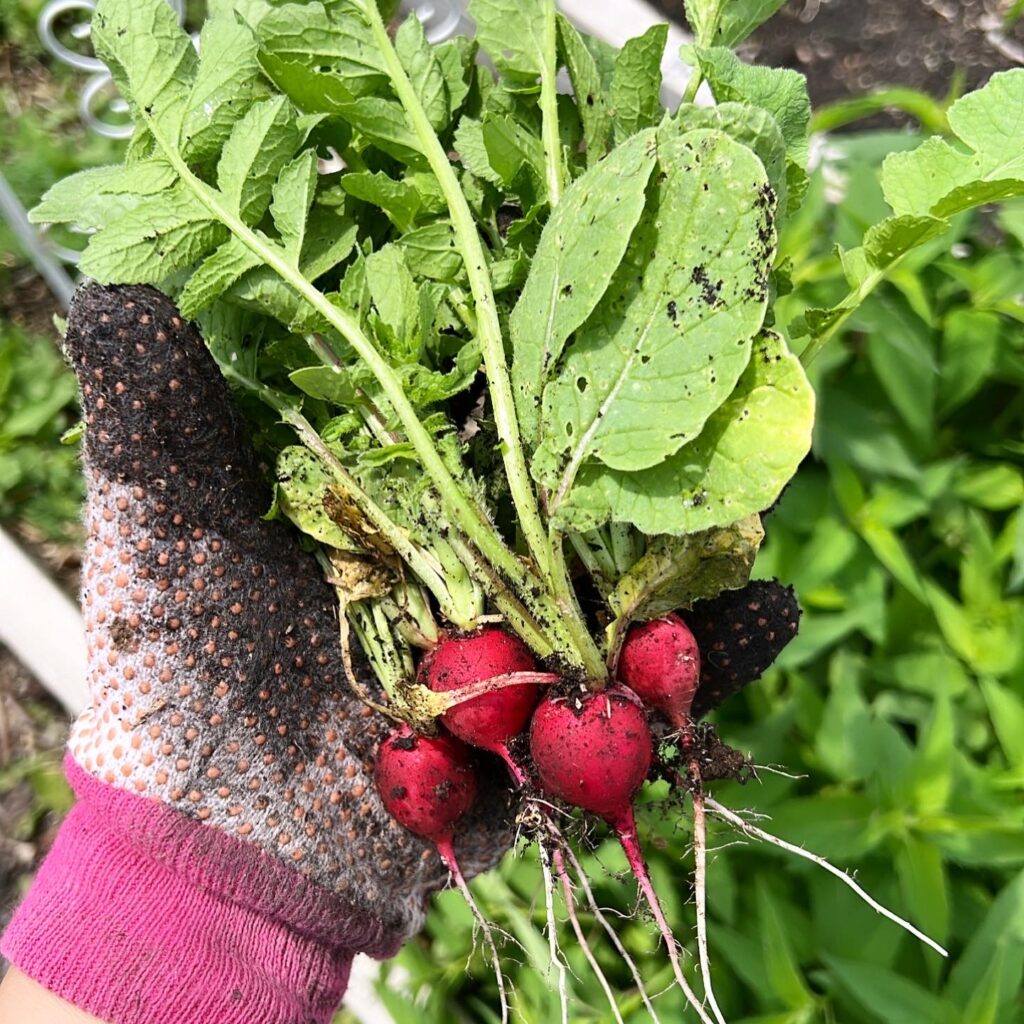
I love growing radishes & turnips from seed. But not only because they’re easy!
Because you can get them planted in the soil early in the Spring before your last frost date.
Then, they end up being one of the first things you get to harvest and enjoy.
I highly recommend sowing a few rows of radishes and/or turnips in your garden both in the Spring and Fall. Both are great shoulder season crops and do best before the weather gets too hot.
How To Grow Radishes & Turnips From Seed
Difficulty Level: Really easy
Sun: Partial sun, minimum of 4 hours of direct sunlight per day.
Planting: Direct sow seeds in early Spring before your last frost date when soil is cool. You can sow again in the Fall for a late season harvest.
Growing: Consistently water soil during germination. Thin plants if needed, providing 2″ between each plant. Radishes will be ready to harvest within as little as 25-30 days. Turnips typically require 50+ growing days.
Suggested Varieties:
- Minowase Summer Cross Daikon — great for pickling!
- Easter Egg Radishes — classic blend of red, pink and white bulbs
- Wasabi Radish — fun, unusual and flavourful!
And there you have it!
That covers 10 of the easiest vegetables to grow from seed for beginners!
Remember, if it’s your first year seed starting just start slow. You can and will succeed with patience and time.
Brand new to seed starting? Check out these other helpful posts next!
- The Ultimate Seed Starting Guide For Canadian Gardeners
- My Master Seed Starting Supplies & Equipment List (10 Must-Have Items!)
- Answers To Your 25 Most Asked Seed Starting Questions
- 5 Common Seed Starting Problems & How To Easily Fix Them
- How To Properly Water & Fertilize Your Indoor Seedlings
You can follow @fromsoiltosoul on Instagram and Pinterest for more gardening content too.
Happy seed starting!
